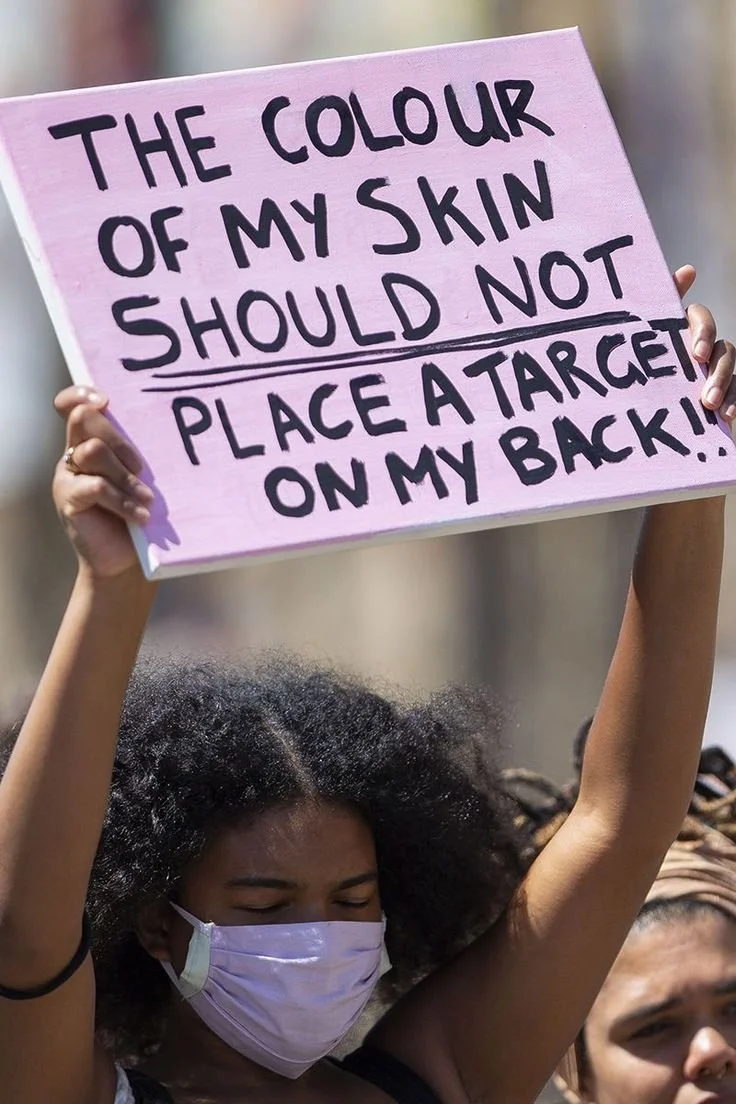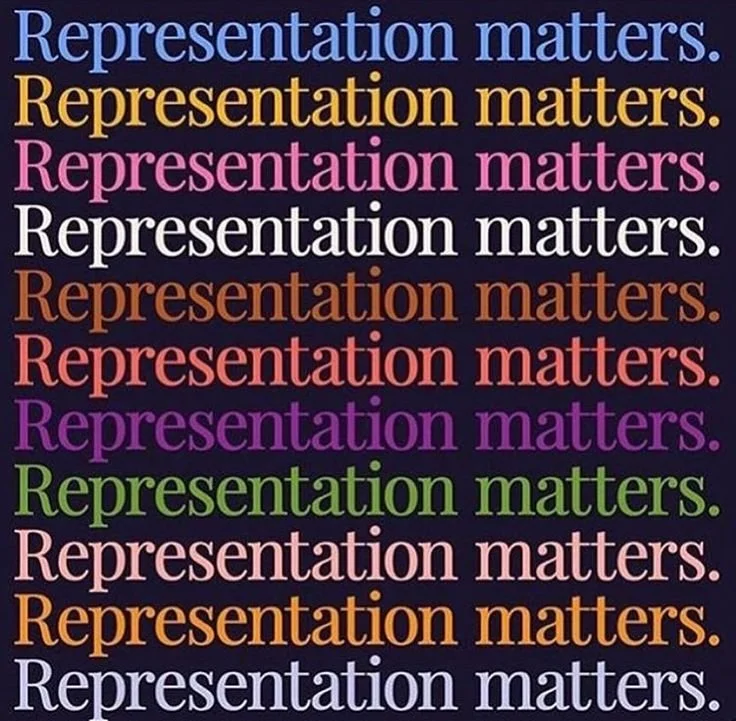The Danger of White Feminism & Selective Awareness: Why We Still Need Minority Mental Health Awareness Month
By Carolina Dionísio
Each July, we celebrate the National Minority Mental Health Awareness Month (also referred to as BIPOC Mental Health Month) — or, at least, we were supposed to.
@poppyandpalms on Instagram
BIPOC Mental Health Month brings attention to the challenges that affect the mental health of people in racial and ethnic minority groups. In May 2008, the US House of Representatives announced July as Bebe Moore Campbell National Minority Mental Health Awareness Month. Mental Health America honours Campbell for being a trailblazer in raising awareness for BIPOC mental health.
Born Elizabeth Bebe Moore (February 18, 1950 – November 27, 2006), Bebe was a journalist, teacher, and best-selling author of novels that focused on racialized communities and their struggles. Inspired by the murder of Emmett Till (1955) and the beating of Rodney King (1991), she explored the impact of race-based crimes on families, police brutality, mental health issues, and the long-term effects of growing up marginalized. Her most renowned works were: Brothers and Sisters, Singing in the Comeback Choir, What You Owe Me, Your Blues Ain't Like Mine; her memoir, Sweet Summer: Growing Up With and Without My Dad; and her first nonfiction book, Successful Women, Angry Men: Backlash in the Two-Career Marriage. Bebe’s essays, articles, and excerpts can also be read in many anthologies.
The fight against racism and prejudice has been global and everlasting, and although we have months such as July to help soothe these horrible issues and their consequences, we’re still not doing so — but why?
I believe one of the reasons behind the lack of more BIPOC Mental Health Month exposure is White Feminism.
While Intersectionality explores the adversities suffered by all women, regardless of race, age, gender, ethnicity, or sexuality, White Feminism is exactly the opposite. It focuses only on white women and completely refuses to address the oppression faced by ethnic minority women and women lacking other privileges.
It is a movement often connected to White Supremacy, and also to Postfeminism (an alleged decrease in popular support for feminism from the 90s onwards) and Femonationalism (feminist ideas based on a nationalist ideology and moved mostly by a xenophobic rhetoric).
With the global rise of far-right parties to power, this discourse is always brought up during political debates with derogatory purposes, which, of course, shifts focus from the actual purpose of the feminist fight: Intersectionality.
The term was coined by Kimberlé Crenshaw, an American civil rights advocate, a scholar of critical race theory, and a professor at the UCLA School of Law and Columbia Law School, where she specializes in race and gender issues. Crenshaw is more known for introducing and developing Interactional Theory: the study of overlapping social identities, particularly minority identities, and relating them to systems and structures of oppression and discrimination. Her work expands into Intersectional Feminism, and she was a pioneer for Black American Feminist Theory, Black British Feminism, and Afropean Feminism.
Campbell and Crenshaw were essential in terms of raising awareness for BIPOC issues, especially mental health and how white domination affects these communities.
Other women of the hundreds worth mentioning are: Dr. Kisha B. Holden, whose work focuses on culturally‑sensitive depression interventions in primary care for ethnic minorities; Dr. Alfiee Breland-Noble, a trailblazer for suiciding prevention among all youth and adults of colour; Dr. Helen A. Neville, a firm researcher of racial-trauma and healing psychologically; Dr. Jenny Wang, an international speaker on the intersections of Asian American and Pacific Islander communities identity and mental health; and Dr. Lillian Comas-Díaz, with her career focus being on ethnocultural approaches to mental health, social justice, and liberation psychology.
Yet, even with all this work and research, “Karen” white feminists still insist they’re the only ones with problems worth solving.
Black Lives Matter Protest, Cardiff; Image Sourced througg Pinterest
Well, according to the NAACP and the Office of Minority Health, only 39% of Black Americans, 36% of Hispanic Americans, and 26% of Asian Americans receive proper mental care when compared to 51% of White Americans. White adults use outpatient mental health care at a rate of 25.3/100 annually, yet Black adults have nearly double as many mental health-related ER visits.
If we focus only on Black women, they have twice the odds of depression compared to White women. The prevalence of depression is also higher among Black women (24.3%) when compared to Black men (18.5%).
If we look into Postpartum Depression, according to a study conducted by the Department of Population Medicine of Harvard Medical School, only 4% of Black women initiate treatment, which makes them 57% less likely to start treatment compared to White women. Of course, this leads to the aggravation of anxiety and depression, which can lead to both suicide attempts and actual commits.
Unfortunately, this problem extends to the youth as well.
According to Time and the NAACP, Black youth are 1.8x more likely to attempt or commit than their white peers, and Black male teens are 4x more likely to commit than Black females. Suicide is the third leading cause of death for Black Americans aged between 10-24.
Native teens are 2-3x more likely, with reservation areas in Alaska being particularly affected.
There aren’t many statistics around Asian American teens because there’s a great stigma around mental health in the AAPI community, which is also a problem. Still, according to UCLA Health, 33% of Korean Americans experience symptoms of depression; 16% of Chinese Americans experience similar symptoms; 78% of Filipino American women rate their mental health as “excellent or very good,” compared to 45% of Chinese American women and 50% of Vietnamese American women.
One of the contributing factors for both the stigma and the declining mental health of AAPI people is the Anti-Asian rhetoric spurred on by the COVID-19 pandemic.
“People's reports of discrimination and unfair treatment have been linked to major depressive disorders, clinical anxiety disorders, and mood disorders,” Dr. Gee says. “It takes a pretty large toll on people's mental health.”
Other very important topics are: insurance, difficulty of access, and the lack of overall support and representation.
According to the Kaiser Family Foundation, 11% of Black adults, 14% of Native Hawaiian or Other Pacific Islander populations, 25% of Indigenous people, and 26% of Hispanic adults are uninsured, compared to only 9% of White adults. BIPOC people also face higher medical charges and hospital bills (Archive of Public Health).
Then, more than 60% of nonmetropolitan counties do not have a psychiatrist or a psychologist, compared to 27% of urban counties without a psychiatrist and 19% without a psychologist.
Another obstacle, regarding culturally appropriate support and representation, is that the mental health and care workforce is 89% White, and only around 4% of psychologists and 2% of psychiatrists are Black. This aggravates other issues such as the language barrier and special cultural and social needs (many providers lack the training for cultural competency necessary to connect in a meaningful way with their BIPOC patients), which leads to underdiagnosed or misdiagnosed mental illness, or even deterring these patients from seeking care at all.
According to data retrieved by the KFF, 55% of Asian Americans, 52% of Indigenous communities, 51% of Hispanic people, and 46% of Black Americans report difficulty in finding culturally understanding providers.
The result is that Black patients tend to wait an hour or more to be seen by healthcare staff when compared to their white peers; both Black and Hispanic people were more likely to have a visit that lasted over four hours; and Black patients were only admitted or transferred to a hospital for mental health treatment 15.6% of the time, compared to 22.5% for white adults.
All this — from financial to cultural and social motives — only contributes even more to the devaluation of BIPOC people who really need our help and support.
Moreover, when connected to White Feminism and overall White Domination, Selective Awareness is also an extremely dangerous thing to do.
Selective Awareness, or Selective Attention, is the cognitive ability of focusing on only specific stimuli. In academic and professional settings, Selective Awareness allows individuals to prioritize and process relevant information while filtering out distractions, which is great for focus and productivity.
The problem begins when we start using this ability to cater only to our needs and wants within the general worldview. This means paying attention to every issue that’s linked to us, and ignoring literally everything else. War, hunger, politics, and poverty — none of it matters as long as it doesn’t touch us. Of course, this is false and a very deceiving rhetoric, because everything affects everyone, even if not on the same scale.
A very recent example of this is happening right now, only a few months after Trump’s rise to office. Given all the recent events triggered by Trump’s administration, many MAGA supporters are now turning their backs on the President and claiming “they did not vote for this”. But the thing is: they did vote for this, they just didn’t expect Trump to come after white people as well with his laws, cuts, and tariffs. And it’s not just White Americans doing this, but BIPOC communities too. Many are only now regretting their vote because their family members are also facing ICE and Trump’s extreme deportation policies.
Now, why would you vote for such a man when you knew your community was the main target?
Image Sourced througg Pinterest
There seems to be a decline in BIPOC support from BIPOC people inside BIPOC communities. I believe this is because receiving “validation” or “the approval” of someone in power (the oppressors) gives the illusion of bringing you closer to power and liberation — the problem is that it still doesn’t make you any more white, and there’s no hatred like white hatred.
Nowadays, the U.S. seems to be living in an alternate, dystopian reality. Everyone who is not a white millionaire is a target, especially (and as always) the marginalized communities.
The mental health of BIPOC people is declining rapidly, and appropriate care and support are harder to receive by the day. Since 2022, Black youth suicide has surpassed White youth suicide, with a rise of 144% from 2007 onwards. For Native Americans, the rate is 28.1 per 100k, and for Hispanic Americans is 11.3 per 100k (an increase of 55% when compared to 2020). White Americans is the only group with declining suicide rates (↓3,9%) since 2018.
Overall, since the late 2010s, suicide has decreased among Whites but significantly increased among BIPOC groups, as a result of misdiagnosis, underdiagnosis, or blocked access to medical care. Still, White Americans receive 56% of all mental health services, compared to BIPOC people who receive around 38% if they’re lucky.
So, yes, we still need Minority Mental Health Awareness Month. We still need to protest. We still need to advocate and to show support to those whose voice is unfortunately often silenced. No one is more tired of these constant battles than the BIPOC community, so we need to keep talking about it because we all deserve proper care when it comes to our mental health.
Some institutions and non-profits we can support are:
Mental Health America and its 2025 BIPOC Mental Health Toolkit;
The Loveland Foundation, focuses on showing support and providing healing and therapy to Black women and non-binary individuals;
Asian Mental Health Collective, makes mental health easily available, approachable, and accessible to Asian communities worldwide;
National Queer and Trans Therapists of Color Network, a healing justice organization that works to transform mental health for queer and trans people of color;
The Steve Fund, dedicated to supporting the mental health and emotional well-being of young people of color;
Center for Native American Youth, a national education and advocacy organization that works alongside Native youth on reservations, rural villages, and urban spaces across the country to improve their overall well-being;
Therapy for Latinx and their mission to destigmatize mental health in the Latinx community.



